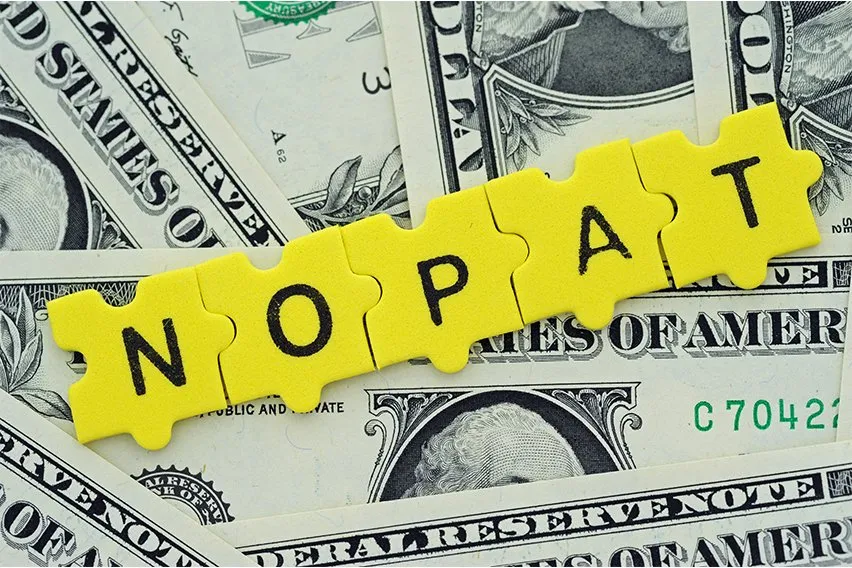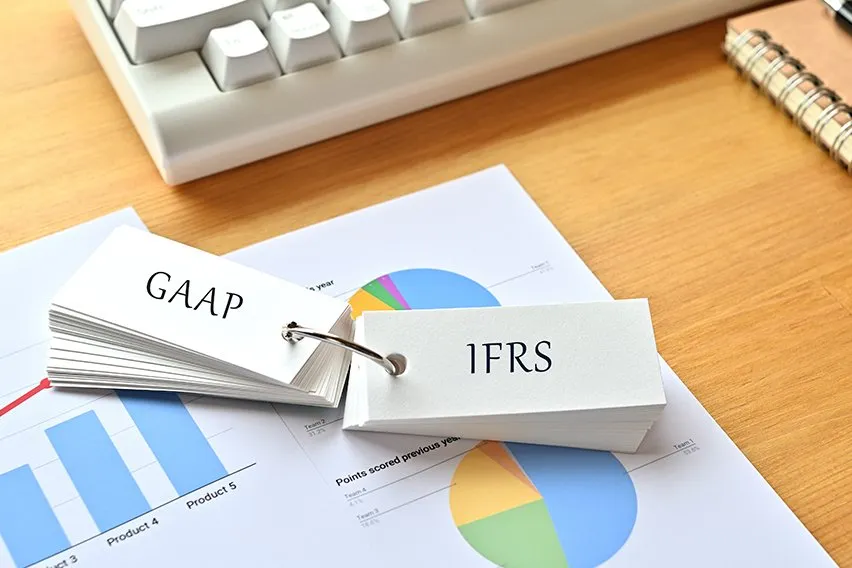What is NOPAT?

When comparing the financial performance of two companies in the same industry, it’s tempting to make a quick evaluation based on just the raw numbers. For instance, if Company A sold a million more phones than Company B, many people would assume that Company A runs a more efficient operation.
But that’s not always the case. Let’s say one company takes out a large loan to fund expansion and another doesn’t. This creates a disparity in their capital structures that can make quick comparisons misleading.
When conducting financial analysis, one metric that can give insight into a company’s performance is net operating profit after taxes (NOPAT). It helps evaluate a company’s operational efficiency. It also provides a realistic picture of its finances in a scenario with no debt or leverage.
Here’s What We’ll Cover:
Understanding Net Operating Profit After Tax (NOPAT)
How Does Net Operating Profit After Tax (NOPAT) Work?
Understanding Net Operating Profit After Tax (NOPAT)
NOPAT is one of the best ways to compare operating profitability between two companies within the same industry. Simple comparisons only analyze a company’s sales. This ignores the crucial impact that debt and leverage have on a company’s financial structure.
Companies that hold high amounts of debt or leverage will be paying significant amounts of interest. They may also receive tax advantages as a result. NOPAT removes the tax savings of debt from the calculation to focus more on the core business activities.
When a company has a strong NOPAT, it indicates that its leadership is making the correct key decisions to ensure profitability. On the other hand, a weak NOPAT can expose limitations in the growth of a company.
NOPAT allows you to compare companies on a level playing field. That’s why it’s considered one of the best tools for calculating a company’s economic value added (EVA).

Advantages of Using NOPAT
- NOPAT removes loan and debt payments from the calculation. This generates a more accurate representation of a company’s operating profitability.
- NOPAT is useful when you want to generate metrics of monetary value instead of percentages.
- A key metric for investing decisions and determining a company’s EVA.
Limitations to Using NOPAT
- NOPAT is not as useful when comparing companies in different industries.
- It offers limited insight when comparing companies of different sizes (MNCs vs. SMEs). This is because it generates values of monetary value instead of percentages.
- It doesn’t account for different growth stages in a company.
How Does Net Operating Profit After Tax (NOPAT) Work?
To calculate NOPAT, you must first determine the operating income – also referred to as operating profit. This is the amount of gross profits minus operating expenses. You can use two different formulas depending on what kind of financial information is available.
If a company’s operating income and tax rate are provided, you can apply the following simple formula:
NOPAT = Operating Income x (1 − Tax Rate)
Sometimes, you might need to include additional variables. For example, if you want to compare a company with a publicly-traded company in the same industry, you might include extra information. Look at the complex formula below. Details such as interest and gains and losses from non-operational activities are also taken into account.
Here’s the complex formula:
NOPAT = (Net Income + Tax Rate + Interest + Non-Operating Gains and Losses) x (1 – Tax Rate)s
Example NOPAT Calculations
In this example, Company A’s net income operating income before taxes is $50,000 and is subject to an effective tax rate of 30%. Let’s plug these numbers into the simple NOPAT formula. It will give us an approximation of post-tax cash flow that excludes tax advantages resulting from debt.
$35,000 = $50,000 x (1 – 0.3)
So, Company A’s net operating profit after taxes is $35,000.
But how do you use NOPAT to compare the performance of two similar businesses? First, let’s take a look at the comparison table below. It provides an example of financial statements from two competing companies.
| Company B | Company C | |
| Revenue | $2,000,000 | $4,700,000 |
| Cost of Goods Sold | $1,000,000 | $2,350,000 |
| Labor | $600,000 | $1,700,000 |
| General & Administrative Expenses | $100,000 | $160,000 |
| OPERATING INCOME | $300,000 | $490,000 |
| Interest Expense | $40,000 | $300,000 |
| Tax Expense (30% Tax Rate) | $78,000 | $57,000 |
| NET INCOME | $182,000 | $133,000 |
If you just compare the two companies’ net income, Company B appears to be performing better. However, if you calculate their respective NOPAT, you’ll find that Company C’s NOPAT ($343,000) is greater than Company B’s NOPAT ($210,000)
This suggests that despite Company B’s higher net income, Company C has a higher operating efficiency and may hold a competitive advantage.
NOPAT vs Net Income
Now that you understand the basics of NOPAT, you may be asking yourself:
Why would you use NOPAT instead of net income?
Both calculations have merit for specific circumstances. But NOPAT can sometimes be a more helpful metric when making investing decisions based on a company’s financial health. It excludes the tax liabilities, benefits, and debt financing costs hidden within a company’s capital structure.
NOPAT gives you a good idea of a company’s operational efficiency and industry competitiveness without the influence of a bank loan or leveraging scheme.

NOPAT vs EBIT
These two metrics are often confused, but have key differences. They identify two separate aspects of a company’s performance.
EBIT stands for “earnings before interest and taxes.” It measures a company’s profitability before considering tax and interest expenses. It’s used to gauge the performance and scale of a company’s core operations.
NOPAT, on the other hand, takes taxes into account without including debt-related interest expenses. Since taxes are a realistic expense, it is a better indicator of a company’s overall performance.
Key Takeaways
Perhaps you’re an investor who’s examining a company’s finances to evaluate a potential opportunity. Or maybe you’re an accountant looking for the best way to analyze your company’s operations.
In that case, NOPAT is an essential measurement to assess. It offers an accurate measure of a company’s efficiency, profitability, and competitiveness. It can even give clues about the long-term viability of a business.
For more information please visit Resource Hub.
RELATED ARTICLES


 Accounts Payable Turnover Ratio: Definition, Formula & Example
Accounts Payable Turnover Ratio: Definition, Formula & Example A Guide to Break-Even Analysis & How to Calculate It
A Guide to Break-Even Analysis & How to Calculate It What Are the Different Types of Liabilities in Accounting?
What Are the Different Types of Liabilities in Accounting? GAAP Vs IFRS: What’s the Difference?
GAAP Vs IFRS: What’s the Difference? A Guide to Double Declining Balance Depreciation Method
A Guide to Double Declining Balance Depreciation Method What Is Corporate Accounting? Everything You Need to Know
What Is Corporate Accounting? Everything You Need to Know